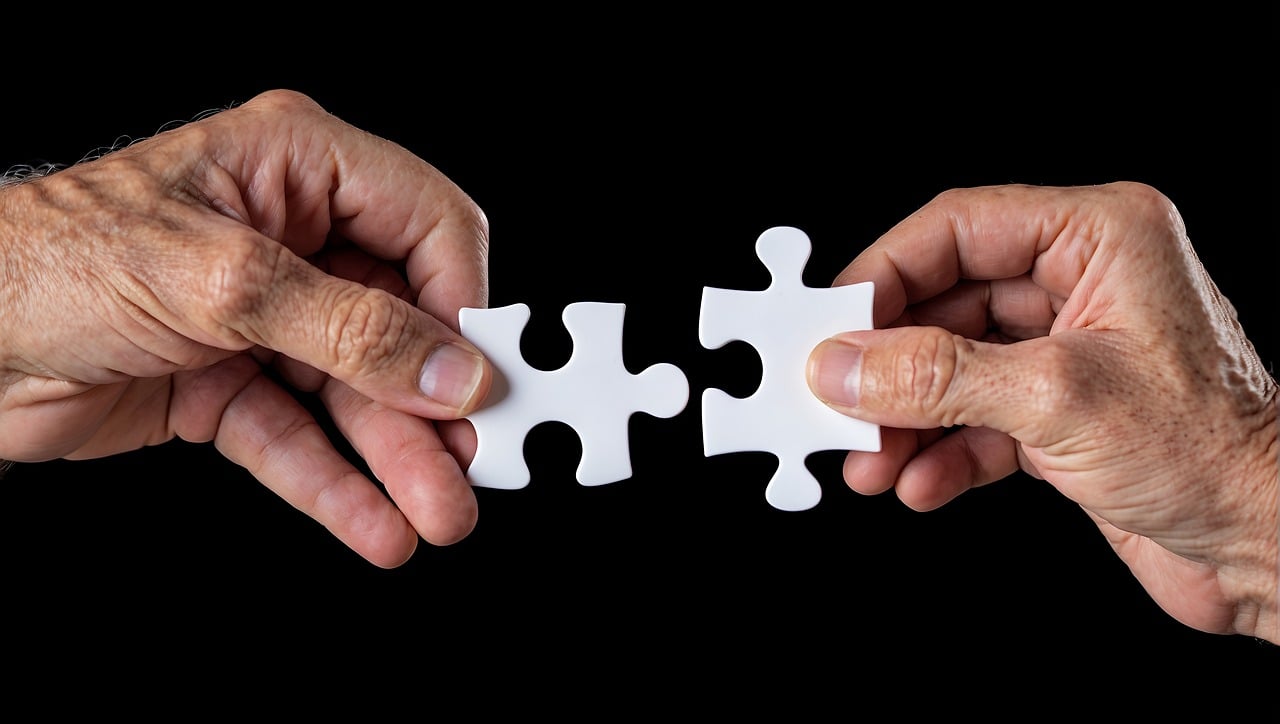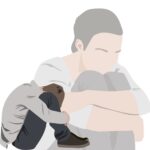Written by Najwa Bashir
Autism spectrum disorder (ASD) is a neurodevelopmental condition marked by problems communicating with others, limited hobbies, and doing the same things over and over again (American Psychiatric Association, 2013). Autism spectrum disorder, or ASD, is a group of brain disorders. Patterns of behavior, hobbies, activities, and social problems that happen over and over again are what define this range. Some kids with ASD have behavior and mental health issues. This is because ASD is a difficult neurodevelopmental disease. Unfortunately, these kids get upset when things change around them because they aren’t very good at adapting. The signs start in early childhood and make it hard to do normal things. Language problems, brain challenges, and epilepsy happen more often in children with ASD than in the general population (Mughal et al., 2022).
The World Health Organization (WHO) reports that 0.76 percent of children around the world have ASD. However, this only includes about 16 percent of all children in the world (Baxter et al., 2015). The Centers for Disease Control and Prevention (CDC) says that about 1.68% of 8-year-old children in the US (or 1 in 59 children) are identified with ASD (Biao, 2018; Palinkas et al., 2019). Parent-reported ASD findings in the US in 2016 were 2.5% on average (Kogan et al., 2018). Autism and Developmental Disabilities Monitoring Network (ADDM) data shows that the number of people with ASD in the US more than doubled between 2000–2002 and 2010–2012 (Biao, 2018). It might be too early to say anything about trends, but in the US, the number of people with ASD seems to have leveled off, with no statistically significant rise from 2014 to 2016 (Xu et al., 2018). No changes have been made to the DSM-5 diagnostic standards yet, so it’s too early to say what effect they will have on frequency (Palinkas et al., 2019).
ASD can happen to people of any race, ethnicity, or income level, but not everyone with ASD is diagnosed the same way. It has been shown that ASD is more common in white children than in black or Hispanic children (Baio, 2018). Even though the differences seem to be going down, they may still be there because of shame, limited access to healthcare services, or the fact that a patient’s first language is not English (Hodges et al., 2020).
People all over the world who have ASD have a lot of health problems. Finding ASD early can lower the number of children who have developmental problems and help them communicate better (Salari et al., 2022). The following text mentions the diagnostic criteria and features of autism spectrum disorder according to DSM 5 TR (American Psychiatric Association, 2022).

Diagnostic Criteria for Autism Spectrum Disorder
A. Consistent problems with social contact and interaction in a variety of settings, shown by any or all of the following, either now or in the past (examples are meant to show, not list all of them; see text):
- Problems with social and emotional exchange, such as an odd social approach and an inability to have a normal back-and-forth talk; less sharing of interests, feelings, or affect; or failing to start or respond to social interactions.
- Lack of skills in nonverbal communication behaviors used for social interaction, such as not combining verbal and nonverbal communication well, having problems with eye contact and body language, not understanding and using gestures properly, or not using any facial expressions or nonverbal communication at all.
- Problems with making, keeping, and understanding relationships, such as having trouble changing how they act in different social situations, having trouble making friends or sharing pretend play, or not being interested in their peers.
B. Limited, recurring patterns of behavior, hobbies, or activities, as shown by at least two of the following, either now or in the past (examples are provided for reference only; see text):
- Movements, objects, or words that are patterned or repeated, such as simple motor stereotypies like lining up toys or spinning objects, echolalia, or using unique phrases.
- Insisting on things staying the same, not changing, or speaking or acting in a certain way over and over again (for example, being very upset by small changes, having trouble with transitions, having rigid thought patterns, welcome practices, or having to take the same route or eat the same food every day).
- Very limited, fixed interests that are intense or focused in a way that isn’t normal (for example, a strong connection to or preoccupation with strange items, interests that are too limited or that last too long).
- Being overly or underly sensitive to sensory input or showing an odd interest in sensory parts of the environment (for example, not caring about pain or temperature, being sensitive to certain sounds or textures, smelling or touching things too much, or being visually interested in lights or movement).
C. Symptoms must be present in the early stages of development, but they may not show up fully until social demands are too much for the person’s limited abilities, or they may be hidden by tactics learned later in life.
D. The symptoms make it hard to act normally in social, professional, or other important areas of life.
E. Intellectual developmental disorder (also called intellectual disability) or global developmental delay are not better ways to explain these problems. A lot of the time, intellectual developmental disorder and autism spectrum disorder happen together. To identify both of them at the same time, a person’s social speech skills must be below what is normal for their age.
Note: People who have a sure-fire DSM-IV diagnosis of autism spectrum disorder, Asperger’s disorder, or pervasive developmental disorder not otherwise defined should be given that label. If someone has major problems with social communication but doesn’t otherwise meet the standards for autism spectrum disorder, they should be checked for social (pragmatic) communication disorder.
Specify the current level based on problems with social contact and limited, repeated patterns of behavior:
Requiring very strong strength
Requiring a lot of help
Needing help:
Specify if:
Whether there is intellectual disability along with it
Together with or without language problems
Specify if:
linked to a known genetic or other health problem or external cause (Note on the code: add more code to find the genetic or other medical problem that goes with it.)
linked to a mental, behavioral, or neurological issue
Specify if:
With catatonia

Diagnostic Features of Autism Spectrum Disorder
- As per criteria A and B, people with autism spectrum disorder have limited, repetitive patterns of behavior, hobbies, or activities and chronic problems with reciprocal social contact and social interaction. These signs show up early in life and make it hard to do normal things (Criteria C and D).
- Core diagnostic features are clear during the developmental stage, but problems may not be seen in some situations because of assistance, compensation, and present supports.
- The disorder also shows up in very different ways based on how severe the autism is, the person’s level of development, their chronological age, and maybe even their gender. This is where the word “spectrum” comes from.
- People who don’t have intellectual or language impairments may have more minor signs of deficits (e.g., Criterion A, Criterion B) than people who do have intellectual or language impairments and may be working hard to hide these deficits.
- Lack of social communication problems will be less obvious if a person has better communication skills in general (for example, speaks clearly and doesn’t have any brain disabilities). In the same way, Criterion B weaknesses (limited patterns of behavior and interests) might not be as clear if the interests are more in line with what kids their age normally like (like trains or Ancient Egypt instead of moving a string).
- The problems with social contact and conversation that are listed in Criterion A are widespread and last a long time.
- Verbal and unconscious communication problems in social situations show up in different ways based on the person’s age, level of intelligence, language skills, and other things like past and present care and support.
- Lack of speech, language delays, trouble understanding speech, repeated speech, or speech that is too precise or stilted are just a few of the language problems that many people have. Autism spectrum disease makes it hard to use language for social contact, even when formal language skills like vocabulary and grammar are fine.
- Lack of social-emotional exchange, or the ability to interact with others and share thoughts and feelings, can be seen in young children who don’t initiate social interactions or share emotions, and who also don’t copy other people’s behavior closely or at all.
- Languages that do exist are often one-sided and don’t involve social reciprocity. They are used to ask for things or name things instead of to talk, share thoughts, or make comments. When it comes to older kids and people who don’t have intellectual disabilities or language delays, problems with social-emotional reciprocity may show up as issues with understanding and responding to complicated social cues like learning when and how to join a chat and what not to say.
- Individuals who have come up with ways to deal with some social challenges still have trouble in new or uncontrolled situations and find it hard and stressful to consciously figure out what is socially natural for most people. Researchers think that this behavior may make it harder to diagnose autism spectrum disorder in these people, maybe especially in older women.
- People who have problems with nonverbal communication skills for social interactions may not make eye contact, make eye contact less often, or use movements, facial expressions, body language, or speech intonation in ways that are not normal for their culture.
- Impaired joint attention is an early sign of autism spectrum disorder. This can show up as not pointing, showing, or bringing things to share an interest with others, or as not following someone’s eye look or pointing.
- People may learn a few useful gestures, but their collection is smaller than other people’s, and they don’t always use expressive motions when they’re talking to others. Teenagers and adults who speak more than one language may have trouble matching their body language with their speech, which can make their relationships seem strange, awkward, or over the top.
- In some situations, impairment may be pretty subtle (for example, someone may make good eye contact when talking), but it will be clear if they can’t combine eye contact, gesture, body posture, prosody, and facial expression when they’re talking to other people, or if they have trouble keeping these things up for long periods of time or when they’re stressed. People who have trouble making, keeping, and understanding relationships should be rated by how well they meet age, gender, and cultural norms.
- It’s possible that there isn’t any, very little, or normal social interest, which can show up as rejecting others, being passive, or approaching them in a way that seems hostile or annoying. These issues are especially clear with young kids, who don’t get enough shared social play and imaginative play (like age-appropriate, open pretend play). Later, they become very set in their ways when they play.
- Older people may find it hard to understand what behavior is acceptable in some settings but not others (for example, being relaxed during a job interview) or the various ways that language can be used to communicate (for example, comedy, white lies). There may be a clear desire for doing things by yourself or with people who are much younger or older than you.
- Many times, people want to make friends without having a full or accurate picture of what friendship really means (for example, bonds that only involve shared hobbies). It’s also important to think about your relationships with peers, coworkers, and providers (in terms of reciprocity).
- As stated in Criterion B, someone with autism spectrum disorder also has limited, repetitive patterns of behavior, hobbies, or activities. These patterns can look different depending on the person’s age, ability, intervention, and present supports.
- Some examples of stereotyped or repetitive behaviors are flapping the hands or flicking the fingers, using the same objects over and over (like spinning coins or lining up toys), and talking in the same way over and over (echolalia, which is the delayed or immediate repetition of heard words; using “you” when talking about oneself; using stereotyped words, phrases, or prosodic patterns).
- Too much adherence to routines and limited patterns of behavior can show up as resistance to change (e.g., distress at what seem like small changes, like taking a different route to school or work; insisting on following rules; rigidity of thought) or ritualized patterns of speaking or acting (e.g., asking the same questions over and over, pacing a perimeter).
- People with autism spectrum disorder often have very narrow, fixed interests that aren’t focused or intense enough. For example, a baby who is very attached to a pan or piece of string; a child who is obsessed with vacuum cleaners; an adult who spends hours making schedules.
- Some interests and habits may be caused by an apparent over- or under-reactivity to sensory input. This can show up as strong reactions to certain sounds or textures, touching or smelling things too much, being fascinated by lights or spinning objects, or sometimes not caring about pain, heat, or cold.
- Extreme reactions or routines about the way food tastes, smells, feels, or looks, or limiting food too much, are common and may be a sign of autism spectrum disorder.
- A lot of people with autism spectrum disorder who don’t have problems with their intelligence or speaking learn to control their repeated behaviors in public. For these people, doing the same thing over and over, like rocking or moving their fingers, may help them relax or calm down. Special hobbies can be fun and inspiring, and they can also help you get an education and a job later on.
- Limited, repeated patterns of behavior, hobbies, or activities may have been present as a kid or in the past, even if the symptoms are not present now. This means that the diagnostic criteria were met.
- Criterion D says that the traits must make it clinically significant harder to do important things in social, occupational, or other areas of present performance.
- Criterion E says that the person’s social communication problems, which may be joined by an intellectual developmental disorder (ID), are not in line with their developmental level; the problems are worse than what would be expected based on their level of development.
Conclusion
Individuals all over the world who have ASD have a lot of health problems. Diagnosing ASD early can lower the number of children who have developmental problems and help people communicate better. So, health officials need to know how common ASD is and how it’s getting worse so they can plan and carry out the right steps to lessen its effects.
References
- American Psychiatric Association. (2013). Diagnostic and statistical manual of mental disorders (5th ed.). https://doi.org/10.1176/appi.books.9780890425596
- American Psychiatric Association: Diagnostic and Statistical Manual of Mental Disorders, Fifth Edition, Text Revision (2022). Washington, DC, American Psychiatric Association.
- Baio, J. (2018). Prevalence of autism spectrum disorder among children aged 8 years—autism and developmental disabilities monitoring network, 11 sites, United States, 2014. MMWR. Surveillance Summaries, 67. http://dx.doi.org/10.15585/mmwr.ss6706a1
- Baxter, A. J., Brugha, T. S., Erskine, H. E., Scheurer, R. W., Vos, T., & Scott, J. G. (2015). The epidemiology and global burden of autism spectrum disorders. Psychological medicine, 45(3), 601-613. https://doi.org/10.1017/S003329171400172X
- Hodges, H., Fealko, C., & Soares, N. (2020). Autism spectrum disorder: definition, epidemiology, causes, and clinical evaluation. Translational pediatrics, 9(Suppl 1), S55. https://doi.org/10.21037/tp.2019.09.09
- Kogan, M. D., Vladutiu, C. J., Schieve, L. A., Ghandour, R. M., Blumberg, S. J., Zablotsky, B., … & Lu, M. C. (2018). The prevalence of parent-reported autism spectrum disorder among US children. Pediatrics, 142(6). https://doi.org/10.1542/peds.2017-4161
- Mughal, S., Faizy, R. M, Saadabadi, A. (2022). Autism Spectrum Disorder. In: StatPearls [Internet]. Treasure Island (FL): StatPearls Publishing; 2024 Jan-. Available from: https://www.ncbi.nlm.nih.gov/books/NBK525976/
- Palinkas, L. A., Mendon, S. J., & Hamilton, A. B. (2019). Innovations in mixed methods evaluations. Annual review of public health, 40(1), 423-442. https://doi.org/10.1146/annurev-publhealth-040218-044215
- Salari, N., Rasoulpoor, S., Rasoulpoor, S., Shohaimi, S., Jafarpour, S., Abdoli, N., … & Mohammadi, M. (2022). The global prevalence of autism spectrum disorder: a comprehensive systematic review and meta-analysis. Italian Journal of Pediatrics, 48(1), 112. https://doi.org/10.1186/s13052-022-01310-w
- Xu, G., Strathearn, L., Liu, B., & Bao, W. (2018). Prevalence of autism spectrum disorder among US children and adolescents, 2014-2016. Jama, 319(1), 81-82. https://doi.org/10.1001/jama.2017.17812
I am a passionate and knowledgeable psychologist, with a Master of Philosophy (MPhil) in Psychology specializing in Counseling Psychology. Through my writing, I share my insights and thoughts on various psychiatric disorders, conduct analysis on films that touch on psychological issues, and explore other topics related to psychology, while also providing valuable information to psychology enthusiasts, students as well the general community.











